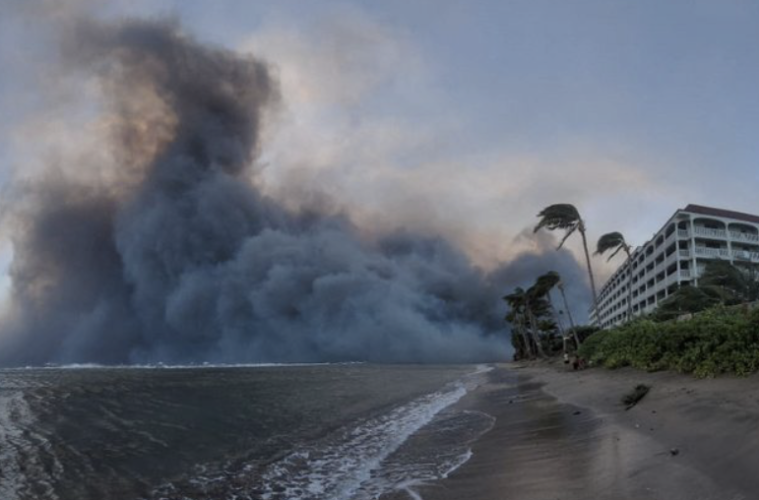Can Industrial Hemp be a Part of Maui’s Recovery and Rebuilding?
The haunting specter of the fire that razed Lahaina is a grim reminder of the devastation that can arise from the intersection of drought, neglect, and climate change. The toll it took — 114 lives lost and counting, 2,000 homes and businesses reduced to ash — is a stark testament to the urgent need for action. As the community grapples with the magnitude of this tragedy, a multifaceted recovery and rebuilding plan will begin to emerge, with, I hope, industrial hemp potentially playing a part.
The fires that consumed Lahaina were fueled, in part, by the dry grasslands of abandoned former pineapple and sugar cane plantations, an inheritance from the past, stoked by high winds from a passing storm. These lands, once bustling with agriculture, have become a tinderbox of potential disaster. Amidst the ashes, an opportunity awaits: to transform one of these neighboring former plantations into a vibrant tapestry of industrial hemp cultivation, an Industrial Hemp Park, fostering renewal and contributing to the rebuilding of the community.
Industrial hemp on the Hawaiian islands has been part of the discussion for some years. Industrial hemp can emerge as a beacon of hope, boasting a global total addressable market ripe for exploration. Its remarkable versatility positions it as a solution for food, feed, construction, insulation, flooring, bio-plastics and biofuels. With its roots sinking deep into the earth and its water-efficient nature, industrial hemp is tailor-made for Maui’s more arid, changing climate. By replacing the now grasslands with hemp, the island can potentially grow its way to the revitalization of its own communities.
One striking advantage of industrial hemp is its rapid growth rate. Hemp can reach full maturity in as little as 110 days, allowing the building of a sustainable industry to begin quickly given the right equipment. This rapid turnaround time is a vital asset in the wake of such devastation, providing a tangible pathway towards rejuvenation.
As Lahaina’s recovery and rebuilding plan begins to take shape, industrial hemp could play a pivotal role in weaving a new narrative for the community. The cultivation, processing, and utilization of hemp can invigorate local economies, generating jobs and breathing life into a region scarred by tragedy. This long-term vision will not only involve physical reconstruction but also economic revitalization.
Industrial hemp’s historical significance is worth noting. Early Americans were encouraged to grow hemp for food, fuel, shelter, and lamp oil. Hemp was a part of our country’s beginning, and it’s only fitting that it should once again take its rightful place, helping those in need of materials for new homes and contributing to the rebuilding of their community.
The road to recovery is paved with challenges — regulatory complexities, public perception, and logistical hurdles. The National Hemp Association has worked in conjunction with Congress through the 2014 and 2018 Farm Bills to legalize hemp as a commodity, dubbing it “America’s Next Natural Resource.” This underscores the growing recognition of hemp’s potential to transform economies, remediate damaged land, and usher in an era of sustainability. The promise of a greener, more resilient future should be enticing. Lahaina’s journey, should it include in part industrial hemp, will become a model for other regions grappling with similar crises and challenges, showcasing the potential of introducing a new commodity on abandoned lands revitalized through sustainable agriculture.
As Lahaina endeavors to heal, it has an opportunity to emerge as a phoenix from the ashes, guided by the green shoots of industrial hemp. This remarkable crop holds the power to restore not only the physical landscape but also the spirit of the community. It’s a chance to shape a future that transcends adversity, demonstrating the remarkable potential of human innovation and resilience.
In the face of unspeakable loss, the leadership of Maui and the people of Lahaina are called to reimagine their environment. Industrial hemp can stands as a part of that vision. Let this be a moment where tragedy gives way to triumph, where a part of America’s past, now available again, becomes the foundation for a flourishing future. As the first seeds are sown, they carry the promise of renewal, growth, and a beacon of hope that shines not only over Maui but also across the world.


